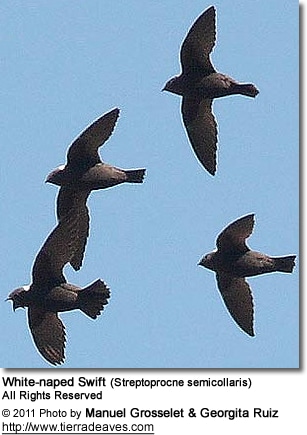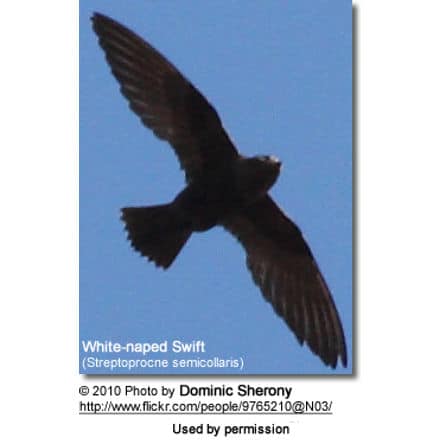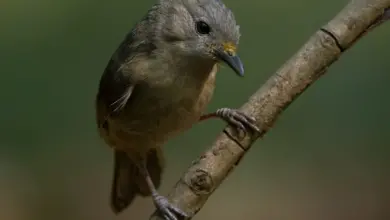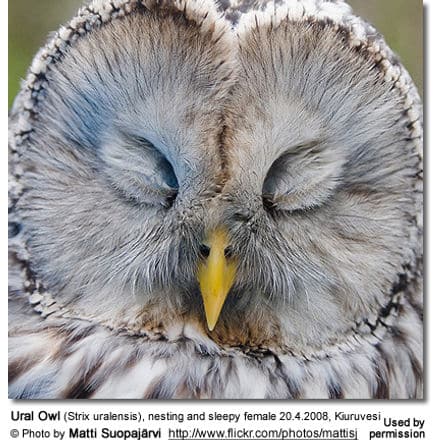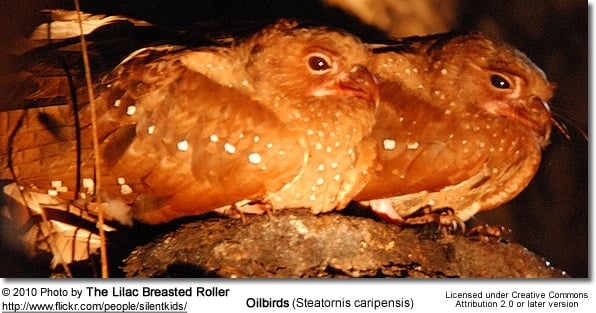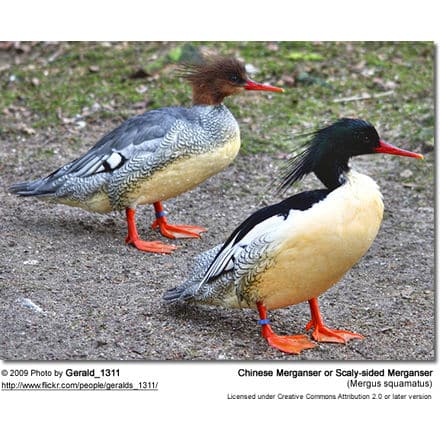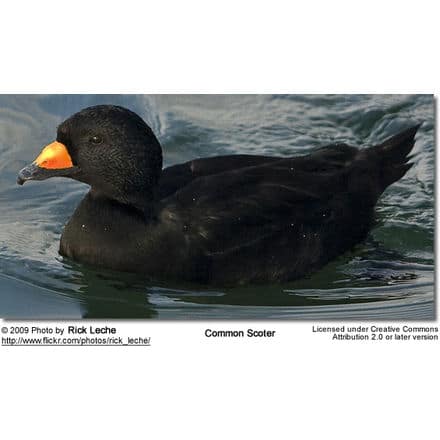White-naped Swifts
Swift Information … Swift Species Index … Swift Species Photo Gallery
The White-naped Swifts (Streptoprocne semicollaris) are the largest representative of the Swift family in the New World (Americas) and possibly the world.
Distribution / Range
This bird is found principally in western and central Mexico, with one record on the Guatemalan border.
This species is essentially a bird of wild highland landscapes, where it favors cliff faces, deep river gorges and high craigs. Its main habitats are pine-oak forests, tropical deciduous forests and second-growth scrub. This swift is usually found at an elevation of 1500 to 3000 m (5000 to 10000 feet) and, much more rarely, down to sea level.
This is a gregarious species, with breeding colonies sometimes including up to 200 individuals. It has been observed roosting alongside several other species of swift as well. Breeding colonies often forage together to several miles away from the breeding site. It has a powerful, fast and direct flight, and will ascent thermals to great heights.
Description
The White-naped Swifts is huge for a swift, 20.5-25 cm (8.2-10 inches) long, and weighing over 115 g (4.1 oz), sometimes up to 225 grams (8 oz).
The adults are brown-black, glossed blue on the back, and have a white crescent on the nape. The tail is fairly squared off, but can be held in a minorly notched way when flying. The more widespread White-collared Swift is similar, sometimes measuring nearly as large. The White-collar, however, has a complete white collar (whereas the White-nape has no white on the underside) and has a strongly notched tail.
Diet / Feeding
White-naped Swifts feeds in flight on a variety of flying insects, including beetles, bees and flying ants.
Nesting / Breeding
The nest is typically a shallow depression (made by the parents) in dry sand, usually lacking any materials or saliva, although they are apparently picky about the consistency of the soil used. The nests have usually been found in caves, with the nest located on ledges off the main chamber. Two white eggs are laid. The details of brooding behavior are not known.
Calls / Vocalizations
This swift is normally silent when seen solitary and noisy when encountered in a group. The call is described as cree-cree-cree. The call is delivered both while in flight and while perched on the walls of the nesting cave.
References
- Chantler and Driessens, Swifts ISBN 1-873403-83-6
Copyright: Wikipedia. This article is licensed under the GNU Free Documentation License. It uses material from Wikipedia.
Please Note: The articles or images on this page are the sole property of the authors or photographers. Please contact them directly with respect to any copyright or licensing questions. Thank you.

